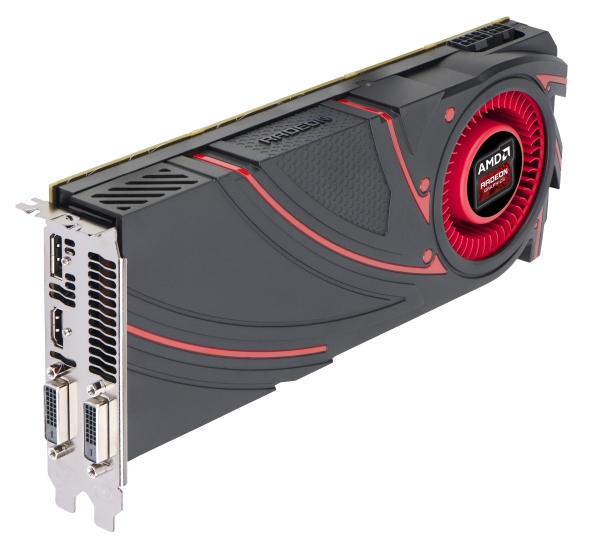XFX, Sapphire, Powercolor, Asus, MSI, HIS, VTX3D and Club3D have all launched their cards, but the first batch doesn’t feature custom cards. There are a few OC cards with a tiny overlock, Powercolor and VTX3D have a couple of cards clocked at 1030MHz, but that’s about it. However, most AIBs have BF4 editions on sale as well, but other than that there are no surprises – custom cards are coming later. The Pro version isn’t out yet and it should launch next week.
We already talked about the specs and the $549 price, which is now official, so there’s really no need to talk about the 2,816 stream processors, 512-bit memory bus or Mantle – and we’ve got better things to do anyway.
The first reviews are up and they are overwhelmingly positive. Of course, the card isn’t perfect. Although it manages to beat the GTX 780 without breaking a sweat, it certainly appears to be sweating in Uber mode. Like we said, the card is very hot and reviewers were unimpressed by the stock cooler, which gets painfully loud in Uber mode. We can't wait to see what sort of coolers AIBs will come up with - with an unimpressive stock cooler there's plenty of room for custom versions.

Then again, in Uber it gets dangerously close to the Titan in some tests and in some it downright beats it, yet it costs half as much as a Titan. This is AMD’s trump card. In terms of price/performance Nvidia’s GTX 780 doesn’t even come close, let alone the Titan. What’s more, the Pro version could put even more pressure on Nvidia, as its performance shouldn’t be far behind the 290X.
This is what we were expecting all along and plenty of leaks over the last couple of weeks indicated that Hawaii would easily beat the GTX 780 and practically tie with the Titan in Uber mode. However, AMD did a much better job keeping the final price under wraps.
We were expecting a bit more. Early leaks pointed to $699, although we suspected AMD was feeding misinformation and keeping Nvidia in the dark. We were right, sort of – we expected it to land at $599, with the R290 priced at $449. In the end AMD surprised us with the $549 price tag and it also left us wondering what the R290 would sell for? It might end up at $449, but if AMD chooses to price it at $399, it would be a killer deal, although we doubt it can go so low.
Now it’s Nvidia’s turn. Since Nvidia was kept in the dark like the rest of us, there were no GTX 780 prices, but now it’s abundantly clear that it has to do something moving into the holiday season. Bottom line – the R9 290X is cheaper and faster than the GTX 780 and Nvidia can’t afford to keep its prices at current levels.




